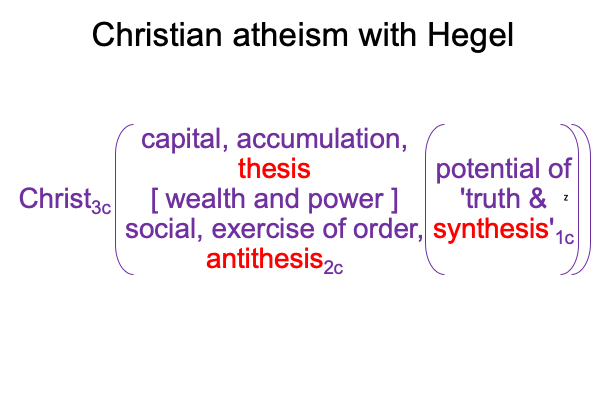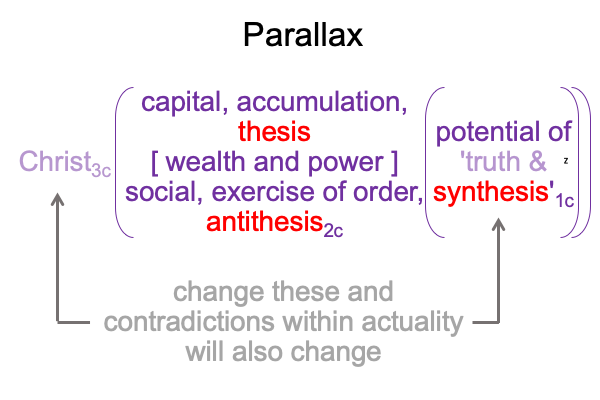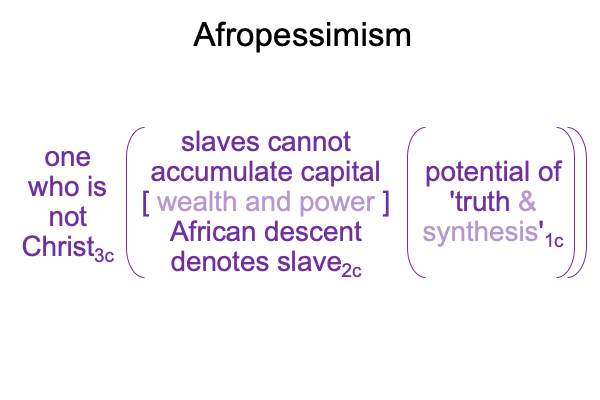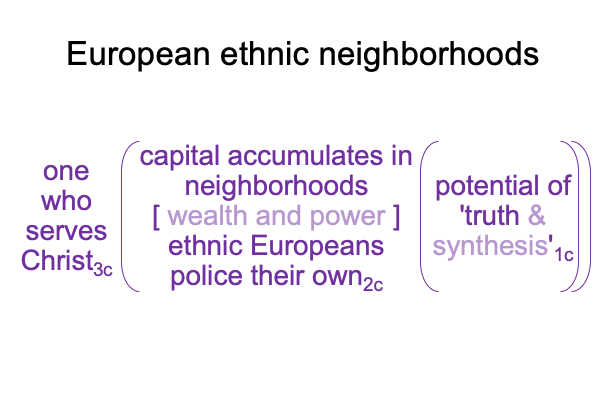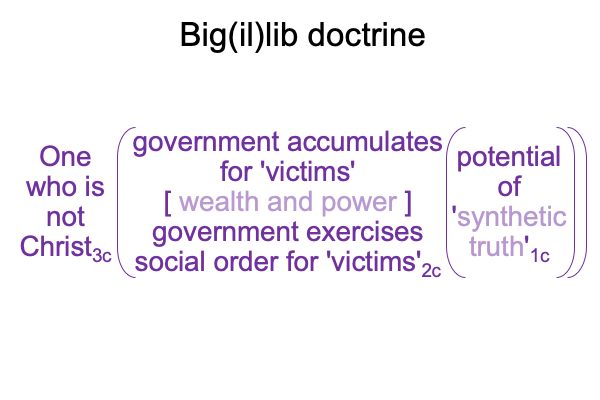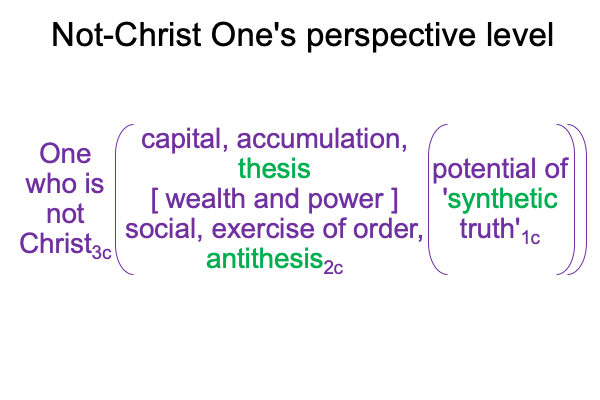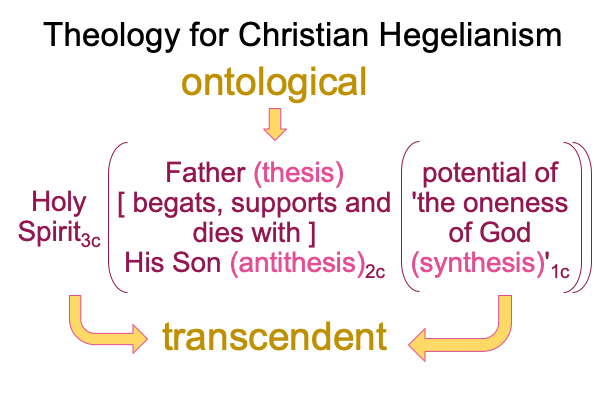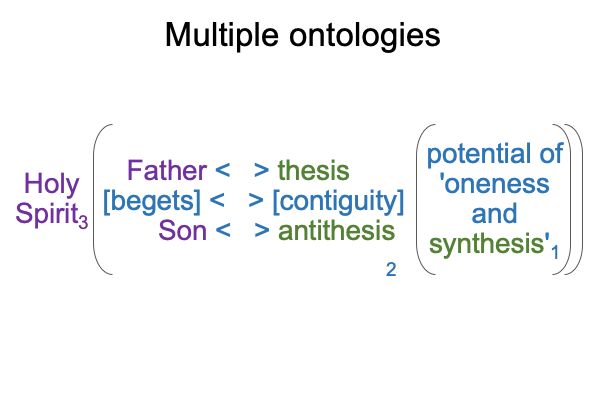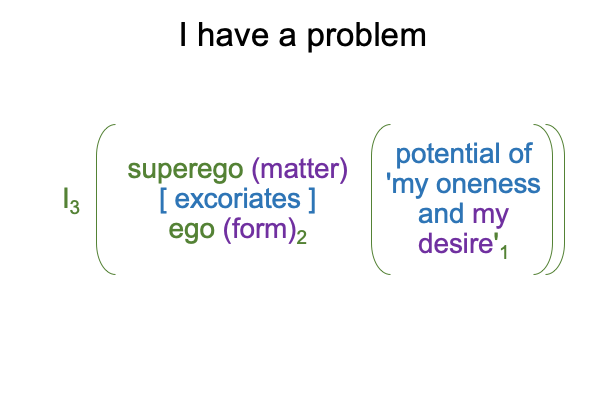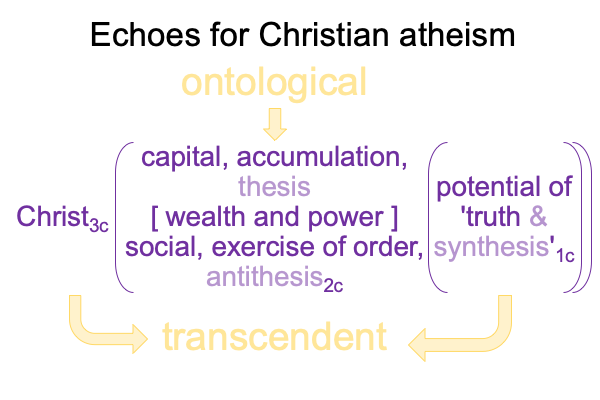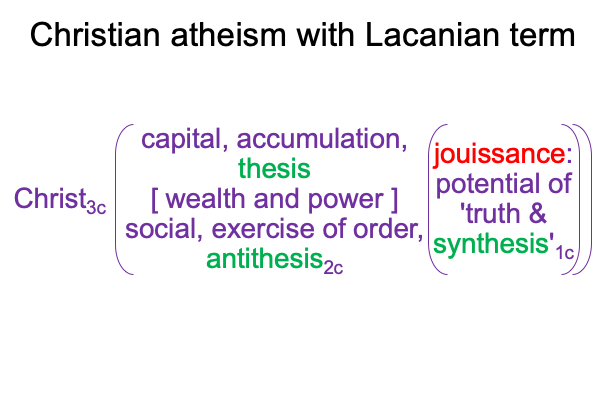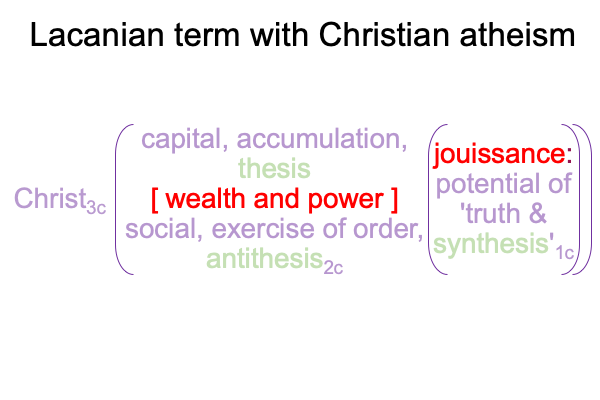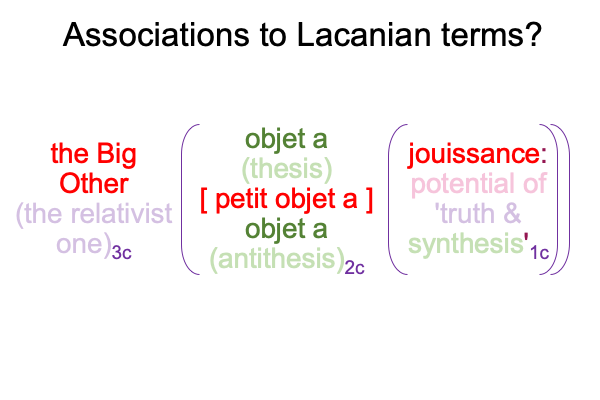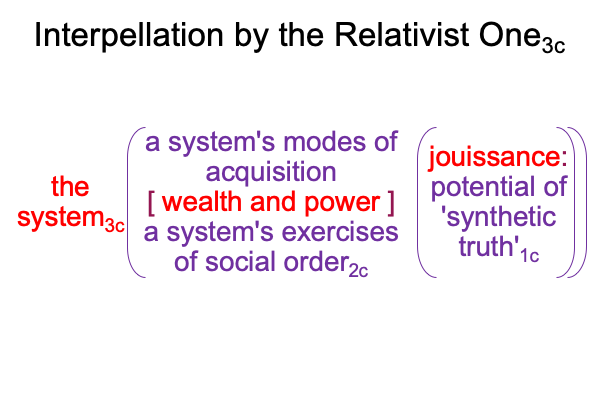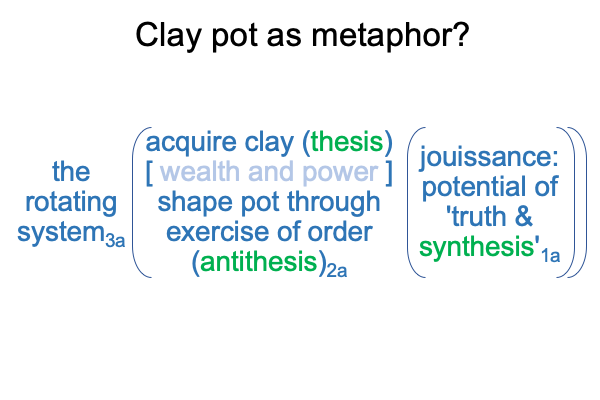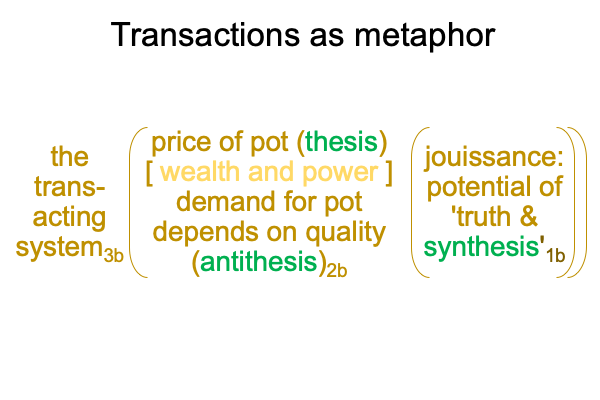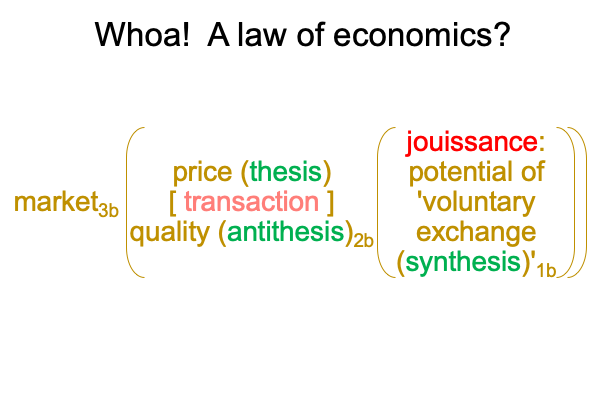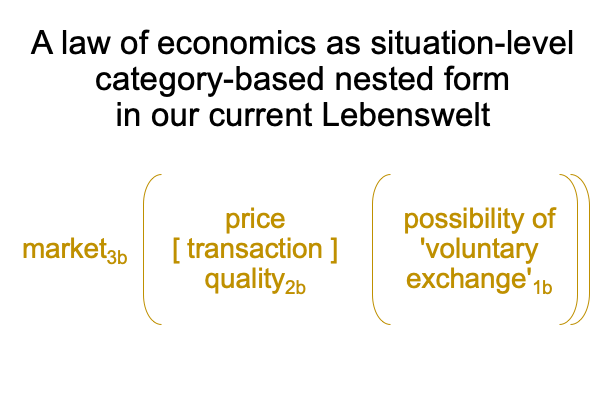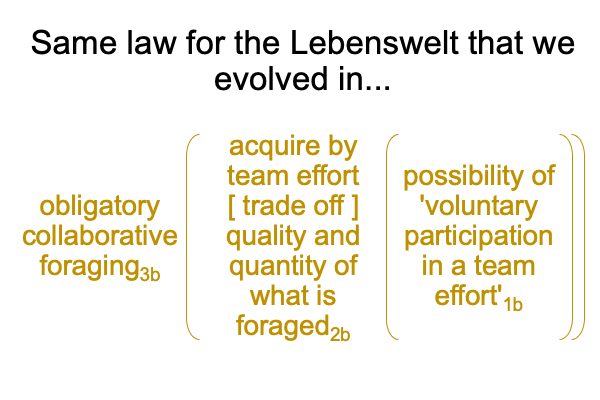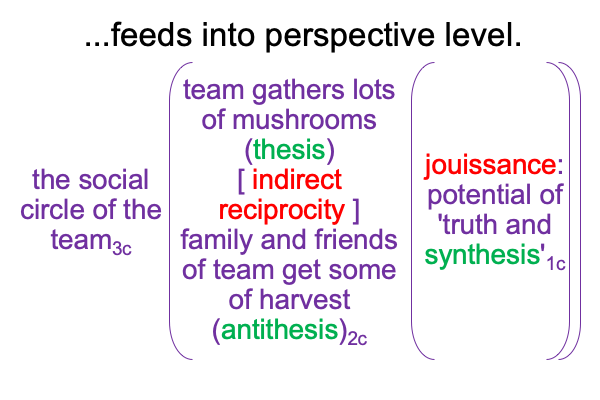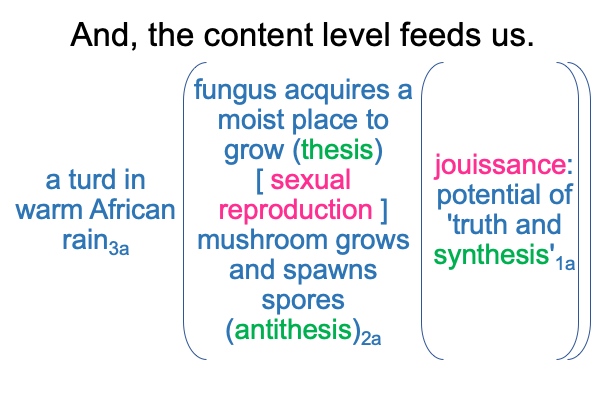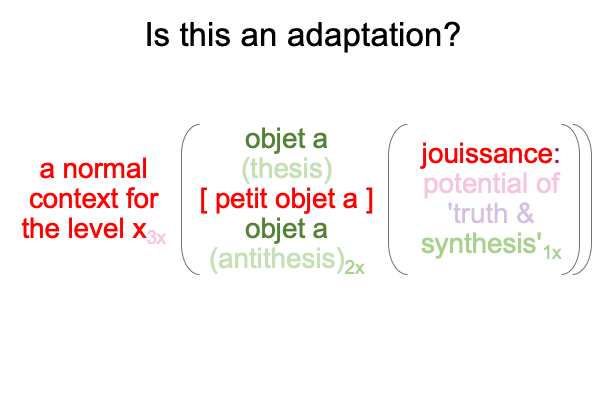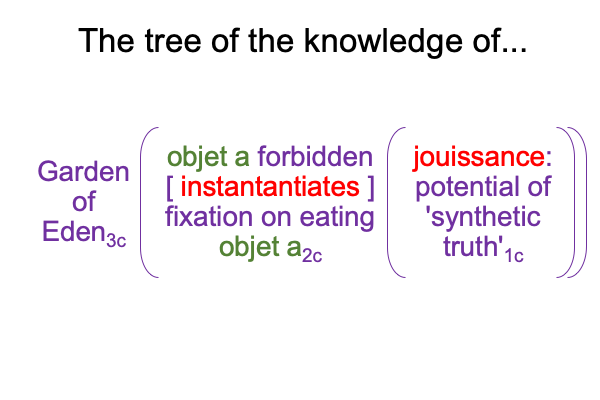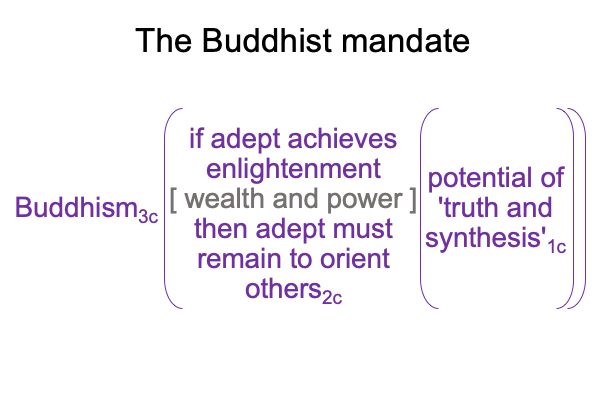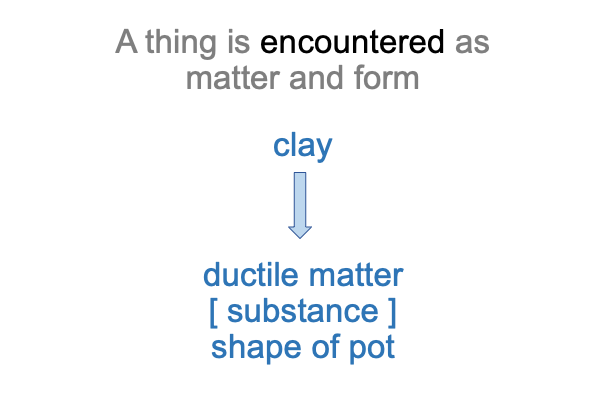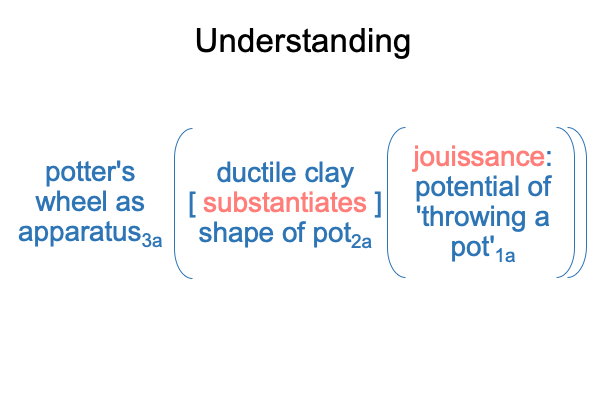Looking at Slavoj Zizek’s Book (2024) “Christian Atheism” (Part 5 of 33)
0058 In the introduction, Zizek lists three recurring themes that belong to his conceptual project (A, B and C).
The first (A) is an atheism at the core of Christianity. The second (B) is the epistemological and the ontological implications of quantum mechanics. The third (C) is a transcendental and ontological parallax.
0059 At this point, I have touched upon the first two, using a Peircean framework.
First (A), I postulate that the doormat that is contextualized by Christ3 is the hylomorphic actuality2c in the following figure.
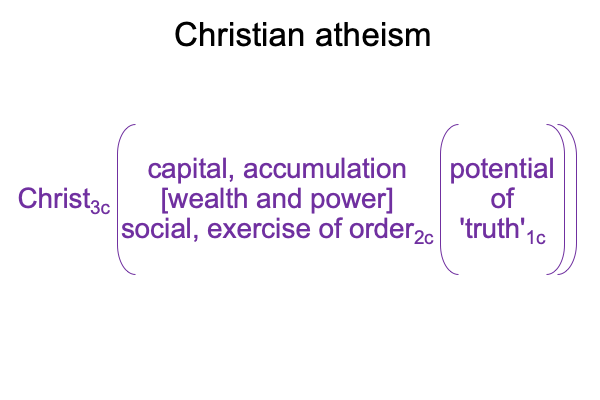
The perspective-level normal context of Christ3c brings the actuality of the dyad, {capital & accumulation [wealth and power] social & exercise of order}2c, into relation with the potential of ‘truth’1c.
0060 Second (B), the ontology of the hylomorphe2 is a very twitchy topic. The [substance]2 changes character the moment that a new normal context3 enters the scene. The logics of thirdness are exclusion, complement and alignment. For quantum mechanics, a situation-level wave-measuring apparatus3b excludes the normal context of a particle-measuring apparatus3b. The [substance]2b follows along by reducing the contradictions inherent in the hylomorphe, given the apparatus3b.
Likewise, if Christ3c (in contrast to the Relativist One3c) is the only normal context to yield an honest potential1cunderlying the perspective-level substance, [wealth and power]2c, then Zizek has a lot of explaining to do.
After all, Christ3c occupies the slot that is reserved for the Holy Spirit3. Fundamentally, the normal context of the Holy Spirit3 brings the dyadic actuality of the Father [and] the Son2 into relation with the potential of the oneness of God1. So, Zizek’s configuration is not fundamental.
But, if it is not fundamental, then what is it?
0061Third (C), Kant (more or less) claims that “reality” is “transcendentally constituted” by the structure of the categories (or should I say, normal contexts and potentials”?) through which we apprehend it.
Here, “reality” may be a situation-level hylomorphic actuality2b, like an electron that is {it [substance] wave}2b. “Reality” may also label a perspective-level actuality2c, such as {capital & accumulation [substance] social & exercise of order}2c. The fact that Zizek chooses Christ3c instead of Marx3c as the normal context is telling. The truth1c of Christ3c differs from the truth1c of Marx3c.
0062 So, there is a choice, either Christ3c or the Relativist One3c (in its diverse constellations).
Perhaps, the relativist choice contributes to the self-inflicted incongruities that plague the post-modern West. Yes, it seems that we are plagued with moral versions of optical illusions. For example, a government intervenes in so-called “capitalist” systems in order to achieve “socialist” aims. So, the award a very profitable contract for surveillance equipment is framed as a orderly solution to domestic security concerns.
Thesis binds to antithesis.
0063 Perhaps, I should be less petty.
The truth1 of Christ3 differs from the truth1 of every pretender3 to the title of “Messiah”, because Christ3 is the one3that self-anointed capitalists want to keep out of their markets2 and the one3 who threatens the boundaries of those who have appointed themselves to be the purveyors of social order2.
0064 Surely, that claim harmonizes with Zizek, who, in chapter one, lauds the mission of letting religion deplete itself.
The question is, “Which religion does Zizek point to? Each and every Christian faction? Or each and every relativist faction pretending to the Messiah’s throne?”
0065 Oh, maybe that is not the question, after all.
Maybe the question is, “How does religion (or the domain of the One3) deplete itself?”
An eerie and disembodied voice intones, “It depletes its own [substance]”.
It depletes its [wealth and power].

